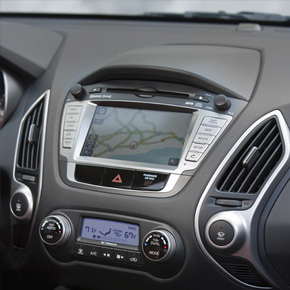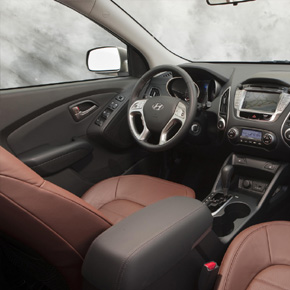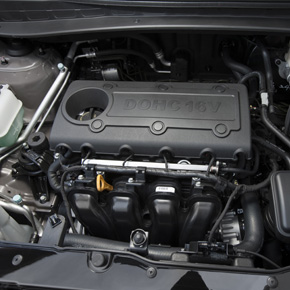2010 Hyundai Tucson
149,000.00$ 221 Views
With high-mounted taillights, multi-surfaced glass and a sculpted bumper, the rear of Tucson also incorporates dynamic design elements.
Full Description
LOS ANGELES, Dec. 3, 2009 ?In 2010, a revolutionary new Tucson joins the rapidly evolving Hyundai product line. The sleek crossover from Hyundai, with its athletic European design, strikes a stark contrast from its predecessor and improves in every functional area, from its roomier cabin with extra cargo space to its leap in fuel economy and technology. Tucson features the company’s “Fluidic Sculpture” design language and is the first vehicle in Hyundai’s 24/7 version 2.0 product initiative (seven all-new models by the end of 2011).
The all-new Tucson is the first Hyundai CUV (Crossover Utility Vehicle) to be designed and engineered in Europe at Hyundai’s Frankfurt-based design and technical centers. It features precedent-setting engineering including advanced weight saving technology and the eco-efficient Theta II 2.4-liter four-cylinder engine delivering up to 31 mpg on the highway. True to Hyundai form, the Tucson applies life-saving safety technologies as standard equipment while offering, for the first time, Downhill Brake Control (DBC) and Hillstart Assist Control (HAC). Likewise, to keep its passengers informed and comfortable Tucson integrates Hyundai’s first panoramic sunroof, touch-screen navigation and a Bluetooth?/sup> hands-free phone system.
EUROPEAN DESIGN
Key attributes of Hyundai’s Fluidic Sculpture design philosophy are the athleticism and sophistication that Tucson demonstrates through its flowing lines, full surfaces and muscular presence. This athletic design language is highlighted by bold, dynamic graphic elements such as the new Hyundai family hexagonal front grille, aggressive lower air intake, sculptured hood creases, swept back headlights, sleek greenhouse and wraparound taillights. Chrome grille accents and door handles lend sophistication to the top-of-the-line Tucson Limited.
Conceived in a global collaboration among Hyundai’s U.S., Korean and European advanced product groups, with design execution led by the Frankfurt studio, the new Tucson was developed as an urban cruiser. It is tough and compact for life in the city, yet sleek and agile for out-of-town travel.
The Tucson combines dynamic, sculpted, performance-oriented styling with thoughtful everyday utility to create a vehicle that will change the way consumers, especially younger car buyers, think about compact crossovers.
With an overall length of 173.2 inches, a width of 71.7 inches and a height of 66.3 inches (with roof rails), Tucson has a great stance and road presence. The design team fused a light, elegant and sporty upper body with belt lines flowing off both the front and rear wheel arches, to a tough, planted lower body so that it is assertive in the way it sits on the road.
The profile of Tucson features a sports car-like theme with a double-zigzag treatment for the wheel arches that wrap around the available Euroflange 18-inch alloy wheels. The concave sills have a wedge-shaped profile that extends rearward and wraps around into the rear bumper, a first of its kind design in a vehicle of this type. The profile is further enhanced by modern silver roof rails.





